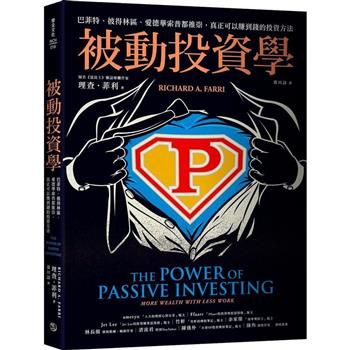| FindBook |
有 3 項符合
NEPO Film & Her Book的圖書 |
 |
NEPO Film & Her Book 作者:Bigshilin Photonepo 出版社:富凱藝術 出版日期:2018-08-10 語言:繁體中文 規格:精裝 / 128頁 / 19 x 30 cm / 普通級/ 全彩印刷 / 初版 |
| 圖書選購 |
| 型式 | 價格 | 供應商 | 所屬目錄 | $ 1530 |
攝影 |
$ 1584 |
攝影 |
$ 1584 |
攝影 |
|---|
| 圖書館借閱 |
| 國家圖書館 | 全國圖書書目資訊網 | 國立公共資訊圖書館 | 電子書服務平台 | MetaCat 跨館整合查詢 |
| 臺北市立圖書館 | 新北市立圖書館 | 基隆市公共圖書館 | 桃園市立圖書館 | 新竹縣公共圖書館 |
| 苗栗縣立圖書館 | 臺中市立圖書館 | 彰化縣公共圖書館 | 南投縣文化局 | 雲林縣公共圖書館 |
| 嘉義縣圖書館 | 臺南市立圖書館 | 高雄市立圖書館 | 屏東縣公共圖書館 | 宜蘭縣公共圖書館 |
| 花蓮縣文化局 | 臺東縣文化處 |
|
|
圖書介紹 - 資料來源:博客來 評分:
圖書名稱:NEPO Film & Her Book
內容簡介
NEPO Film & Her Book,此書籌備了六年,為作者利用富士FP-100B撕拉片的拓印底材,命名為NEPO,並用科學的方式將材料建立出一套自己的攝影系統。書籍內容包含了攝影的精神、拍立得底片的歷史、賈伯斯如何繼承了拍立得商業的精神,以及作者攝影人生的經驗與家族的聯繫。書中的影像與色彩,顛覆了傳統的攝影感官經驗,最後利用數位工具,把類比時代的底片帶入數位時代,做了完美的傳承,全書充滿作者對攝影的感情,攝影不再是單純的影像,同時也是他生命樂章的一部分。
作者介紹
作者簡介
Bigshilin Photonepo
Bigshilin Photonepo was born in Taipei, Taiwan.
Founder of NEPO Gallery. Thirty years of photography experience, Author of computer science books.
Bigshilin Photonepo
Bigshilin Photonepo was born in Taipei, Taiwan.
Founder of NEPO Gallery. Thirty years of photography experience, Author of computer science books.
序
專業推薦:
生命的證據 The evidence of life
作為一位採訪者,在試圖了解自己與觸碰他人的過程當中,我時常收到這樣的回饋:生命的意義存在於尋求解答的過程。然而,我總感覺意義並非總是像解題、推導公式那樣,那麼容易說得清楚;總有一時半刻,意義反而以「錯誤」的姿態現身——尋求解答變得不是那麼重要,反而是在於發現、製造錯誤,甚至去認同自己造成的錯誤。這些錯誤穿越個性與命運,與當事人一生相伴,特別是了解這本書的生成背景之後,更有如此感觸。
嚴格來說,這是一本像是攝影集的藝術家自製書(artist book),帶著隱晦不刻意彰顯的自傳色彩,夾雜著特殊的視覺成像、家庭物件等日常吉光片羽,去尋找生命的證據,每一張帶著奇艷色彩的影像畫面,是經過創作者一遍又一變反覆試驗研究,才得出的成果,這一套「將拍立得撕拉片洗底成底片」的過程,在網路上可發現這是屬於一小群人的業餘研究,彷彿是這一個摩登時代對過往拍立得風華年代集體中毒的暗號,隨著巨型底片工業的逝去,緊抓著剩餘留存於世的撕拉式底片庫存進行研究。
儘管網路上每個人做這件事情的原因皆不同,大多也只停留在「家庭式水槽」的工作間,頂多發個部落格文、拍下一小段影片示範就表示大功告成,但此書的作者卻從中得到了巨大的回饋,他訝異於這段洗底片的過程背後其實暗喻著一套從未在商業體制、工業研究裡成為具體規範的浩瀚系統。此系統在過去未曾建立,未來也因為材料的早已停產而終將被消耗殆盡。
這當中存在的無力感,讓他驚喜之餘,卻也無力可施,他以「好」科學來稱呼這本書內所收錄的篇章字句,此書所收錄的一切,用意可能不在於使讀者理解拍立得發明者Edwin Land的洞察天機與神妙,反而是透過持續鑽研一件微小到似乎不太見容於當代社會餘裕、興趣的撕拉片黑歷史,去呈現他對生命的體悟。
透過洗底而得到正負片影像同時存在的底片,好像某種程度的手工濾鏡,透過濾鏡他看見了原本無法直接看見的色彩與成像,含括了關於生命和宇宙的奧義。好比說:作為一位父親,在一個樓梯間的場景,他對著兒子拍了一張,兒子離開後他又對空景拍了一張,往後的許多年,在他一遍遍翻閱影像的時候,赫然發現兒子長大的過程,存在與消失的畫面似乎成了生命中無法避開的預言和暗示。科學家愛因斯坦說:「瘋狂就是不斷地重複作同一件事,並期待會有不同的結果。(Insanity: doing the same thing over and over again and expecting different results.)」諸如此類的發現讓他無法罷手相關的推敲和研究,更何況,這是一套嘗試理解過去而非迎接未來的踏查之路,書中收錄的每一張照片都有故事、都藏了時空斷句,如果有天你有幸遇上了作者,或許應當找他聊聊,也許他可以帶你驗證你身邊未曾所見的歷史細節與伏筆。
序
NEPO= Negative + Positive
一切都開始於對底片時代的懷念!從網路上知道,可以從拍立得公司生產的撕拉片,透過洗底的手法,取得一張大底片,可是當時拍立得公司的撕拉片已經完全停產,在市場上就只能找到富士公司生產的FP-100C撕拉片。我首選就只能使用它,發現按照網站教學去做,不是很困難的就可取得大㡳片。這個方法簡單說,就是用撕拉片拍完照後,可以同時拿到一張照片和一張負片,那張負片透過化學洗底過程,可以得到一張很像傳統的彩色大尺寸負片。
由於自身是黑白攝影的愛好者,朋友就介紹我黑白撕拉片FP-100B,或許可以得到一張大底片。FP-100B很少有人洗底成功,因為他在化學處理上,完全不同於FP-100C,為了找出正確的處理方法,花了不少的精神與時間。第一次洗底成功的結果,並沒有黑白負片,卻洗出一張具有「色彩」的彩色負片。
這張具有「色彩」的彩色負片,在經過掃描之後,它會呈現出色彩的正像,但是並非全彩,但其某些色彩光豔的程度即使用Photoshop也無法模擬出來。推測它的感光塗料可能含有螢光物質。這種特殊的色彩呈像,吸引我開始大量的拍攝FP-100B,長期觀察它洗底出爐的結果,發現這個隱藏版的非全彩的負片,同樣具有其他傳統底片的影像表達能力。
從因為懷舊想得到一張傳統的大底片,演變成認識,証實一個新的化學感光材料的存在,過程中再加上數位時代才有的掃瞄機與影像軟體的應用,找到有一種類比與數位時代的結合意義!在實驗與寫書的過程中,深深的感覺到撕拉片在方便與美麗的背後,它所牽涉到的撮影工具與材料,與當時的工業能力,商業利益,息息相關。
拍立得公司的創辦人蘭德博士留給後人,一句激勵人心的話:「人生要選最不可能達成的事來做。」,能説、敢說這句話,只有這位曠世奇才,因為他的科學和商業能力,無人能及。遇到這個隱藏版的特殊色彩負片,也算是"被"遇到了一件"不可能的事",因緣巧合的開始有點了解博士的名言。我相信除了科學能量之外,對攝影的熱情和專注,也是完成這一次實驗和寫出這本書不可缺的重要力量。同時家人和朋友的支持與鼓勵更是一切的起點,這本書如果帶有豐沛的感情,他們扮演著很重要的角色!
1: "Don`t undertake a project unless it is manifestly important and nearly impossible" Edwin Land-Polaroid funder
2:富士公司在2014年宣布了FP-100B停產。
3:用FP-100B的洗底得到的負片,在書內的命名為"NEPO"film它就是一種負片,具有表達影像的能力,在相反則不軌( Reciprocity law failure)的呈現上,相對的提前。
Afterword
This project grew out of my nostalgia for analog photography. In particular, I loved and missed the process of developing film: the smell of the chemicals, the texture of the paper. As analog film became scarcer and scarcer, replaced by digital cameras, I longed to immerse myself in that process again. I was also fascinated by negatives, those inverted images printed on transparent plastic film, in which light and dark change places.
When I learned that Fujifilm’s FP-100C – at that time, one of the last remaining peel-apart instant films – produced large and detailed negatives, I was fascinated. I learned how to reclaim the negatives, using water and bleach to strip away the light-sensitive emulsion coating the plastic, revealing the image underneath. My nostalgia was satisfied.
But I have always been a lover of black and white photography, and I yearned for similarly large, clear negatives of black and white images. A friend introduced me to FP-100B, a black and white version of the peel-apart film with which I was already familiar. Unlike FP-100C, FP-100B was rarely processed in order to remove the emulsion and reveal the underlying negative images. I began to experiment.
As I did so, I found that the chemical process to reclaim FP-100B negatives was more complicated than the one used for FP-100C. I also discovered something startling: once the emulsions and coatings were stripped away, FP-100B negatives were characterized by vivid color. Unlike the positive image printed on the photo paper, the negative would emerge in brilliant shades of blue, red, orange, and yellow. In addition, certain portions of the negative image would actually contain positive shapes. It was this strange coexistence of positive and negative in the same film that led me to name FP-100B, as well as these reclaimed negatives, NEPO – that is, NEgative POsitive.
The unique appearance of these negative images inspired me to take more photos, and I began to experiment systematically. I discovered that these negatives could themselves be a creative medium. Out of my nostalgia-fueled attempt to obtain conventional black and white negatives emerged a new medium.
In order to achieve this, however, I needed digital technology. While the colors themselves were not altered digitally, their true brilliance, along with the details of the images, was only revealed after the negative images were scanned and displayed on a computer screen. The images in this book thus connect the analog and the digital eras. Useless scraps from analog processes have been transformed into digital art.
This is appropriate, because in the process of developing the NEPO images and writing this book, I developed a profound feeling that peel-apart instant film epitomizes the dependence of photography on industry. Scientific research and business imperatives enabled the development of this technology; however, as soon as there was no more profit to be made, the industry moved on, and these remarkable films became obsolete. Yet, as I hope I have shown, these negatives – which were originally waste products, remnants thrown away after the positive image photo was obtained – still have value.
The eminent Dr. Edwin Land, founder of Polaroid, once said, “Don’t undertake a project unless it is manifestly important and nearly impossible.” Gradually, I have come to understand that Dr. Land’s words describe my own experience, as well as the philosophy that guided his own remarkable career. Although it was not my original intention, I was pushed by circumstances into undertaking a project – the development of NEPO images – that met both of Dr. Land’s requirements. As an analog technology whose potential can only be fully realized with digital era tools, such as scanners and image editing software, FP-100B negatives have truly moved from the realm of the impossible into that of the possible.
In closing, I wish to thank those who have supported me throughout this process of discovery. In addition to an understanding of the scientific background, passion for photography, and focus, the support and encouragement of family and friends has been essential to this undertaking. For me, their help was the foundation of it all; any warmth found within these pages comes from them.
--
A positive image is one in which light and dark appear as we see them with our own eyes. A negative image is one which light and dark have been reversed, so that, for example, a tree appears to be bright, while the noon sky behind it is dark. Film negatives received their name because they provide a negative, or reversed, image, which is then used to produce a positive image print on photographic paper.
A peel-apart film is designed to be used with an instant camera. When you take a photo, it produces both a positive image snapshot on photo paper, and a negative of equal size to the print. These emerge together from the camera and must be peeled apart, hence the name.
Originally, I believed that FP-100B combined the characteristics of traditional negative and positive films. Now, however, I believe that this effect – in which positive images suddenly appear in an otherwise negative image – is due to the negative film being exposed to levels of light that are too high for it. When this limit is exceeded, the light – which would normally produce a dark shape in the negative shape – suddenly produces a bright positive image instead. The technical name for this phenomenon is Reciprocity-Law Failure.
Bigshilin Photonepo
生命的證據 The evidence of life
作為一位採訪者,在試圖了解自己與觸碰他人的過程當中,我時常收到這樣的回饋:生命的意義存在於尋求解答的過程。然而,我總感覺意義並非總是像解題、推導公式那樣,那麼容易說得清楚;總有一時半刻,意義反而以「錯誤」的姿態現身——尋求解答變得不是那麼重要,反而是在於發現、製造錯誤,甚至去認同自己造成的錯誤。這些錯誤穿越個性與命運,與當事人一生相伴,特別是了解這本書的生成背景之後,更有如此感觸。
嚴格來說,這是一本像是攝影集的藝術家自製書(artist book),帶著隱晦不刻意彰顯的自傳色彩,夾雜著特殊的視覺成像、家庭物件等日常吉光片羽,去尋找生命的證據,每一張帶著奇艷色彩的影像畫面,是經過創作者一遍又一變反覆試驗研究,才得出的成果,這一套「將拍立得撕拉片洗底成底片」的過程,在網路上可發現這是屬於一小群人的業餘研究,彷彿是這一個摩登時代對過往拍立得風華年代集體中毒的暗號,隨著巨型底片工業的逝去,緊抓著剩餘留存於世的撕拉式底片庫存進行研究。
儘管網路上每個人做這件事情的原因皆不同,大多也只停留在「家庭式水槽」的工作間,頂多發個部落格文、拍下一小段影片示範就表示大功告成,但此書的作者卻從中得到了巨大的回饋,他訝異於這段洗底片的過程背後其實暗喻著一套從未在商業體制、工業研究裡成為具體規範的浩瀚系統。此系統在過去未曾建立,未來也因為材料的早已停產而終將被消耗殆盡。
這當中存在的無力感,讓他驚喜之餘,卻也無力可施,他以「好」科學來稱呼這本書內所收錄的篇章字句,此書所收錄的一切,用意可能不在於使讀者理解拍立得發明者Edwin Land的洞察天機與神妙,反而是透過持續鑽研一件微小到似乎不太見容於當代社會餘裕、興趣的撕拉片黑歷史,去呈現他對生命的體悟。
透過洗底而得到正負片影像同時存在的底片,好像某種程度的手工濾鏡,透過濾鏡他看見了原本無法直接看見的色彩與成像,含括了關於生命和宇宙的奧義。好比說:作為一位父親,在一個樓梯間的場景,他對著兒子拍了一張,兒子離開後他又對空景拍了一張,往後的許多年,在他一遍遍翻閱影像的時候,赫然發現兒子長大的過程,存在與消失的畫面似乎成了生命中無法避開的預言和暗示。科學家愛因斯坦說:「瘋狂就是不斷地重複作同一件事,並期待會有不同的結果。(Insanity: doing the same thing over and over again and expecting different results.)」諸如此類的發現讓他無法罷手相關的推敲和研究,更何況,這是一套嘗試理解過去而非迎接未來的踏查之路,書中收錄的每一張照片都有故事、都藏了時空斷句,如果有天你有幸遇上了作者,或許應當找他聊聊,也許他可以帶你驗證你身邊未曾所見的歷史細節與伏筆。
陳依秋(朋丁 共同創辦人)推薦
序
NEPO= Negative + Positive
一切都開始於對底片時代的懷念!從網路上知道,可以從拍立得公司生產的撕拉片,透過洗底的手法,取得一張大底片,可是當時拍立得公司的撕拉片已經完全停產,在市場上就只能找到富士公司生產的FP-100C撕拉片。我首選就只能使用它,發現按照網站教學去做,不是很困難的就可取得大㡳片。這個方法簡單說,就是用撕拉片拍完照後,可以同時拿到一張照片和一張負片,那張負片透過化學洗底過程,可以得到一張很像傳統的彩色大尺寸負片。
由於自身是黑白攝影的愛好者,朋友就介紹我黑白撕拉片FP-100B,或許可以得到一張大底片。FP-100B很少有人洗底成功,因為他在化學處理上,完全不同於FP-100C,為了找出正確的處理方法,花了不少的精神與時間。第一次洗底成功的結果,並沒有黑白負片,卻洗出一張具有「色彩」的彩色負片。
這張具有「色彩」的彩色負片,在經過掃描之後,它會呈現出色彩的正像,但是並非全彩,但其某些色彩光豔的程度即使用Photoshop也無法模擬出來。推測它的感光塗料可能含有螢光物質。這種特殊的色彩呈像,吸引我開始大量的拍攝FP-100B,長期觀察它洗底出爐的結果,發現這個隱藏版的非全彩的負片,同樣具有其他傳統底片的影像表達能力。
從因為懷舊想得到一張傳統的大底片,演變成認識,証實一個新的化學感光材料的存在,過程中再加上數位時代才有的掃瞄機與影像軟體的應用,找到有一種類比與數位時代的結合意義!在實驗與寫書的過程中,深深的感覺到撕拉片在方便與美麗的背後,它所牽涉到的撮影工具與材料,與當時的工業能力,商業利益,息息相關。
拍立得公司的創辦人蘭德博士留給後人,一句激勵人心的話:「人生要選最不可能達成的事來做。」,能説、敢說這句話,只有這位曠世奇才,因為他的科學和商業能力,無人能及。遇到這個隱藏版的特殊色彩負片,也算是"被"遇到了一件"不可能的事",因緣巧合的開始有點了解博士的名言。我相信除了科學能量之外,對攝影的熱情和專注,也是完成這一次實驗和寫出這本書不可缺的重要力量。同時家人和朋友的支持與鼓勵更是一切的起點,這本書如果帶有豐沛的感情,他們扮演著很重要的角色!
1: "Don`t undertake a project unless it is manifestly important and nearly impossible" Edwin Land-Polaroid funder
2:富士公司在2014年宣布了FP-100B停產。
3:用FP-100B的洗底得到的負片,在書內的命名為"NEPO"film它就是一種負片,具有表達影像的能力,在相反則不軌( Reciprocity law failure)的呈現上,相對的提前。
Afterword
This project grew out of my nostalgia for analog photography. In particular, I loved and missed the process of developing film: the smell of the chemicals, the texture of the paper. As analog film became scarcer and scarcer, replaced by digital cameras, I longed to immerse myself in that process again. I was also fascinated by negatives, those inverted images printed on transparent plastic film, in which light and dark change places.
When I learned that Fujifilm’s FP-100C – at that time, one of the last remaining peel-apart instant films – produced large and detailed negatives, I was fascinated. I learned how to reclaim the negatives, using water and bleach to strip away the light-sensitive emulsion coating the plastic, revealing the image underneath. My nostalgia was satisfied.
But I have always been a lover of black and white photography, and I yearned for similarly large, clear negatives of black and white images. A friend introduced me to FP-100B, a black and white version of the peel-apart film with which I was already familiar. Unlike FP-100C, FP-100B was rarely processed in order to remove the emulsion and reveal the underlying negative images. I began to experiment.
As I did so, I found that the chemical process to reclaim FP-100B negatives was more complicated than the one used for FP-100C. I also discovered something startling: once the emulsions and coatings were stripped away, FP-100B negatives were characterized by vivid color. Unlike the positive image printed on the photo paper, the negative would emerge in brilliant shades of blue, red, orange, and yellow. In addition, certain portions of the negative image would actually contain positive shapes. It was this strange coexistence of positive and negative in the same film that led me to name FP-100B, as well as these reclaimed negatives, NEPO – that is, NEgative POsitive.
The unique appearance of these negative images inspired me to take more photos, and I began to experiment systematically. I discovered that these negatives could themselves be a creative medium. Out of my nostalgia-fueled attempt to obtain conventional black and white negatives emerged a new medium.
In order to achieve this, however, I needed digital technology. While the colors themselves were not altered digitally, their true brilliance, along with the details of the images, was only revealed after the negative images were scanned and displayed on a computer screen. The images in this book thus connect the analog and the digital eras. Useless scraps from analog processes have been transformed into digital art.
This is appropriate, because in the process of developing the NEPO images and writing this book, I developed a profound feeling that peel-apart instant film epitomizes the dependence of photography on industry. Scientific research and business imperatives enabled the development of this technology; however, as soon as there was no more profit to be made, the industry moved on, and these remarkable films became obsolete. Yet, as I hope I have shown, these negatives – which were originally waste products, remnants thrown away after the positive image photo was obtained – still have value.
The eminent Dr. Edwin Land, founder of Polaroid, once said, “Don’t undertake a project unless it is manifestly important and nearly impossible.” Gradually, I have come to understand that Dr. Land’s words describe my own experience, as well as the philosophy that guided his own remarkable career. Although it was not my original intention, I was pushed by circumstances into undertaking a project – the development of NEPO images – that met both of Dr. Land’s requirements. As an analog technology whose potential can only be fully realized with digital era tools, such as scanners and image editing software, FP-100B negatives have truly moved from the realm of the impossible into that of the possible.
In closing, I wish to thank those who have supported me throughout this process of discovery. In addition to an understanding of the scientific background, passion for photography, and focus, the support and encouragement of family and friends has been essential to this undertaking. For me, their help was the foundation of it all; any warmth found within these pages comes from them.
--
A positive image is one in which light and dark appear as we see them with our own eyes. A negative image is one which light and dark have been reversed, so that, for example, a tree appears to be bright, while the noon sky behind it is dark. Film negatives received their name because they provide a negative, or reversed, image, which is then used to produce a positive image print on photographic paper.
A peel-apart film is designed to be used with an instant camera. When you take a photo, it produces both a positive image snapshot on photo paper, and a negative of equal size to the print. These emerge together from the camera and must be peeled apart, hence the name.
Originally, I believed that FP-100B combined the characteristics of traditional negative and positive films. Now, however, I believe that this effect – in which positive images suddenly appear in an otherwise negative image – is due to the negative film being exposed to levels of light that are too high for it. When this limit is exceeded, the light – which would normally produce a dark shape in the negative shape – suddenly produces a bright positive image instead. The technical name for this phenomenon is Reciprocity-Law Failure.
Bigshilin Photonepo
|











